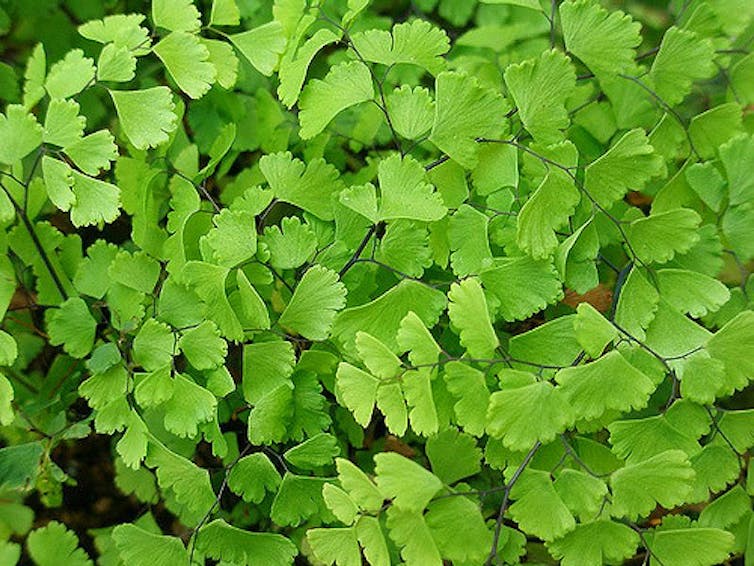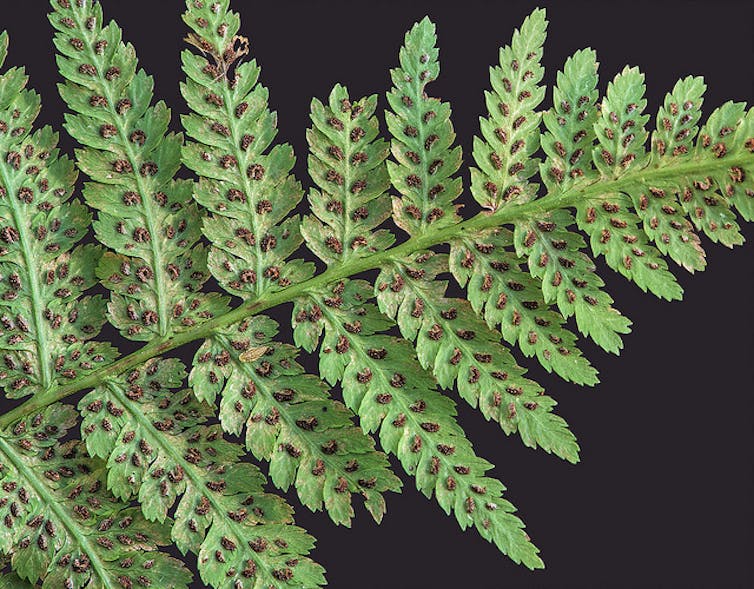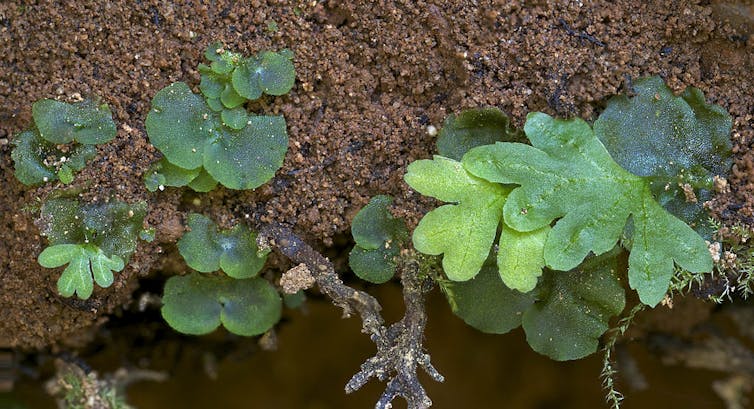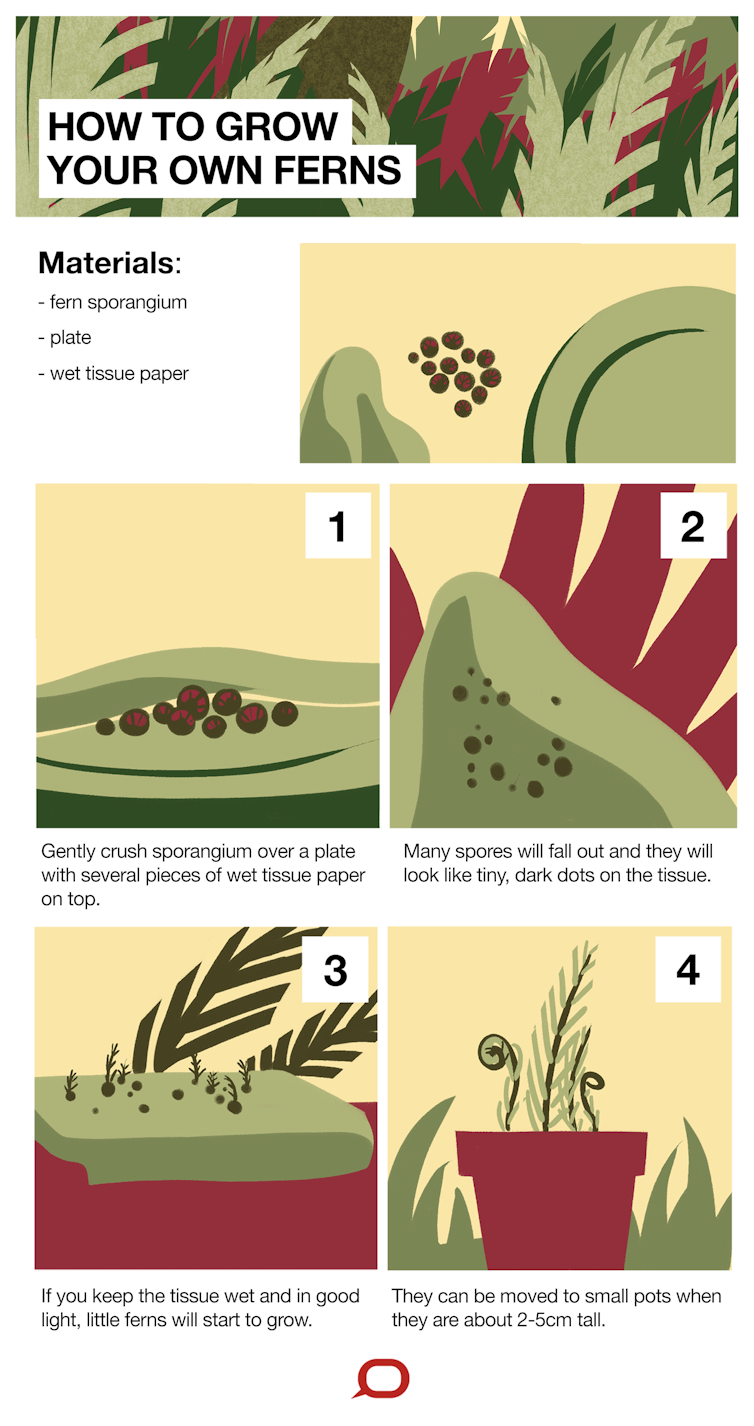Curious Kids: Why are fern leaves shaped the way they are, and are all ferns identical?
- Written by Gregory Moore, Doctor of Botany, University of Melbourne
Curious Kids, is a series for children where kids send in questions and we ask an expert to answer them.
Dear Conversation, I am a curious kid and while I was bush walking I noticed these ferns. I wanted to know why fern leaves are shaped they way they are, and if they don’t have flowers does that mean all ferns are identical? Thank you for your help – Heather, age 8, Brisbane
You’ve asked two great questions, which I’ll answer one by one.
Read more: Curious Kids: Are zombies real?
Why are fern leaves shaped the way they are?
Ferns are a very old group of plants that came along more than 200 million years before the dinosaurs walked the Earth. They were food for the plant-eating dinosaurs and they’re really great survivors.
Fern leaves are shaped the way they are because each species has adapted or changed over time to better suit its particular environment. That’s all thanks to evolution.
Some ferns are small and grow on other plants in wet places, while others are tall and tough. There are thousands of types of ferns, which grow in different environments all over the world.
The leaves of ferns are called fronds and they all have different sizes, shapes and textures. There are the tiny, soft fronds of maidenhair ferns.
 The soft fronds of maidenhair ferns are suited to wet environments.
Flickr/Anika Malone, CC BY
The soft fronds of maidenhair ferns are suited to wet environments.
Flickr/Anika Malone, CC BY
Then there are the tough, leathery fronds of bracken and the large fronds of tree ferns that may be more than 2 metres long.
The fronds of many ferns begin as small, curled balls. As they grow, they change shape and start to look like the neck of a violin. That’s why they’re called fiddleheads.
 The fronds of many ferns begin as small, curled balls. As they grow, they change shape and start to look like the neck of a violin.
Marcella Cheng/ The Conversation, CC BY-ND
The fronds of many ferns begin as small, curled balls. As they grow, they change shape and start to look like the neck of a violin.
Marcella Cheng/ The Conversation, CC BY-ND
Many people think different tree ferns look the same, but if you look closely the various species are very different in size, shape and texture.
If they don’t have flowers does that mean all ferns are identical?
Since ferns are such an old group of plants, they don’t have flowers or cones. Ferns were around for about 200 million years before plants with flowers came along, so they make new ferns in a different way.
Most ferns use things called spores, which are tiny and look like pepper. They can travel long distances on the wind or by getting a lift from a passing animal.
During some times of the year, if you look underneath the fronds, you can see the sporangium (that’s the part of the leaf where the spores are made).
 You can see the sporangium on the underside of this fern.
Flickr/Richard Droker, CC BY
You can see the sporangium on the underside of this fern.
Flickr/Richard Droker, CC BY
Some look like tiny bunches of grapes, some look like a little brown purse, and others like a dome. Often the sporangium starts out light green and as it ripens, turns dark brown.
Ferns spores develop into what scientists call “gametophytes”, which usually look flat, green and spongy. These gametophytes produce eggs and sperm.
 You can see here the gametophyte of a Sword Fern – it is the flattish, spongy-looking bit.
Flickr/Richard Droker, CC BY
You can see here the gametophyte of a Sword Fern – it is the flattish, spongy-looking bit.
Flickr/Richard Droker, CC BY
The egg or sperm from one gametophyte can join up with the egg or sperm from a different gametophyte.
When that happens, the baby ferns produced this way are not genetically identical to the parent or to each other. It only works properly if there’s enough water around so that the sperm can swim to the eggs. You can read more about it here.
Some ferns, however, can sprout ferns from their underground stems or from special bulb-shaped bits on their fronts called “bulbils”. When that happens, the baby fern is genetically identical to its parent.
If you want to grow your own ferns, follow the instructions below. It is great fun to watch them grow.
 How to grow your own ferns.
Marcella Cheng/The Conversation, CC BY-ND
How to grow your own ferns.
Marcella Cheng/The Conversation, CC BY-ND
Read more: Curious Kids: What started the Big Bang?
Hello, curious kids! Have you got a question you’d like an expert to answer? Ask an adult to send your question to us. You can:
* Email your question to curiouskids@theconversation.edu.au * Tell us on Twitter by tagging @ConversationEDU with the hashtag #curiouskids, or * Tell us on Facebook
 CC BY-ND
Please tell us your name, age and which city you live in. You can send an audio recording of your question too, if you want. Send as many questions as you like! We won’t be able to answer every question but we will do our best.
CC BY-ND
Please tell us your name, age and which city you live in. You can send an audio recording of your question too, if you want. Send as many questions as you like! We won’t be able to answer every question but we will do our best.
Authors: Gregory Moore, Doctor of Botany, University of Melbourne





